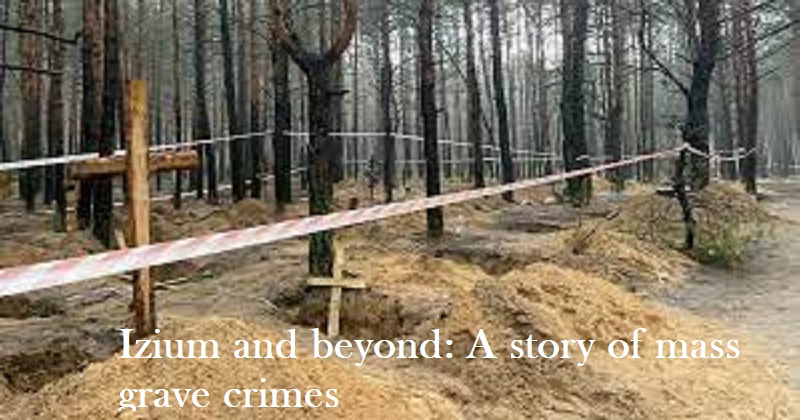
Every society desires to honour their deceased. For each family to get closure, the missing must be located. The process of matching DNA samples, compiling the shreds, determining the cause of death, and identifying potential crimes will go on for many months, if not years. It takes meticulous forensic work to restore human dignity even the most dehumanising of sights. Any mass burial, whether it be in Bosnia, Rwanda, Argentina, or Guatemala, calls for our humanity to reconstruct the individual lives that were lost there. An innate need to respect the deceased would be violated by the thought of someone going missing and being anonymously buried.
Evidence of potential atrocities emerges as Russia under President Vladimir V. Putin withdraws. Moscow’s war in Ukraine now appears to follow this pattern, most notably at Izium. The human rights commissioner for the Ukrainian Parliament, Dmytro Lubinets, mentioned a ‘genocide of the Ukrainian community’. A more unsettling environment has emerged from the post-apocalyptic picture of hundreds of corpses arranged in black plastic bags beneath weeping birches last spring in Bucha, close to Kiev. After more than five months of Russian possession of Izium, a burial site in a pine forest was exhumed. An inscription on a cross states that seventeen Ukrainian Army troops were found in the mass grave that was discovered.
The killing of more than 8,000 Bosnian men and boys around Srebrenica was the worst single massacre in Europe since 1945. But genocide requiring the ‘intent to destroy, in whole or in part, a national, ethnicial, racial or religious group, as such’ is not easily proved. Other international crimes, including crimes against humanity, may also have occurred. Izium is unlikely to be the final location of numerous corpses lost in the forest if the war in Ukraine continues and festers (even for years as it appears possible). A country with a tragic past in this area is also not unfamiliar with the horrors arising in Ukraine. Izium lies close to Babyn Yar, the Kyiv ravine where the Nazis murdered more than 33,000 Jews.
Every one of the human skeleton’s around 200 bones and 32 teeth has a story to tell. The forensic pathologists, ballistic experts, anthropologists, radiologists, police detectives, and national and international authorities will travel to Izium with the goal of determining what violence caused those burials. In a battle, it can be difficult to determine the exact reason someone died or how they died. Prior to Bosnia, there was Argentina, where between 1976 and 1983, tens of thousands of people were dropped from aircraft into the South Atlantic. Every interaction that involved parents talking about their ‘disappeared’ children tended to end in tears. Bereaved parents’ grief was overwhelmingly intense. There was no farewell and no suitable way to express grief. This distorted thinking leads to desperate behaviour.
On October 2, 1941, the Jews of Zagare were ordered into the main square before being taken into the woods for execution. In 1944, the Soviet Red Army examined a mass grave in the forest and found 2,402 corpses. A sign in the woods points to the ‘Graves of the Victims of the Jewish Genocide’. Russia has forged a stronger-than-ever Ukrainian national identity in Izium and other places, along with wounds that will be reflected down through the generations. It was obvious that every shot the Serbs fired into their male targets represented an equivalent amount of cruelty against the female survivors, who were forced to suffer the pain of the unimaginable.

Post Your Comments